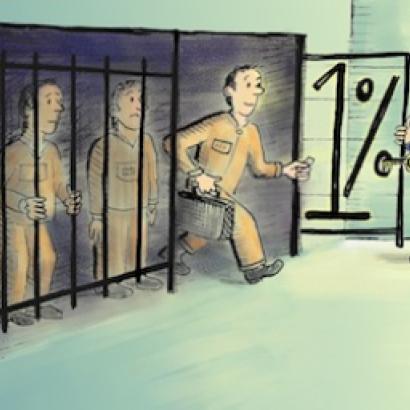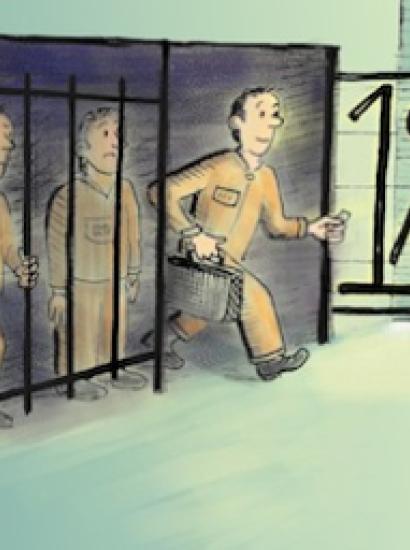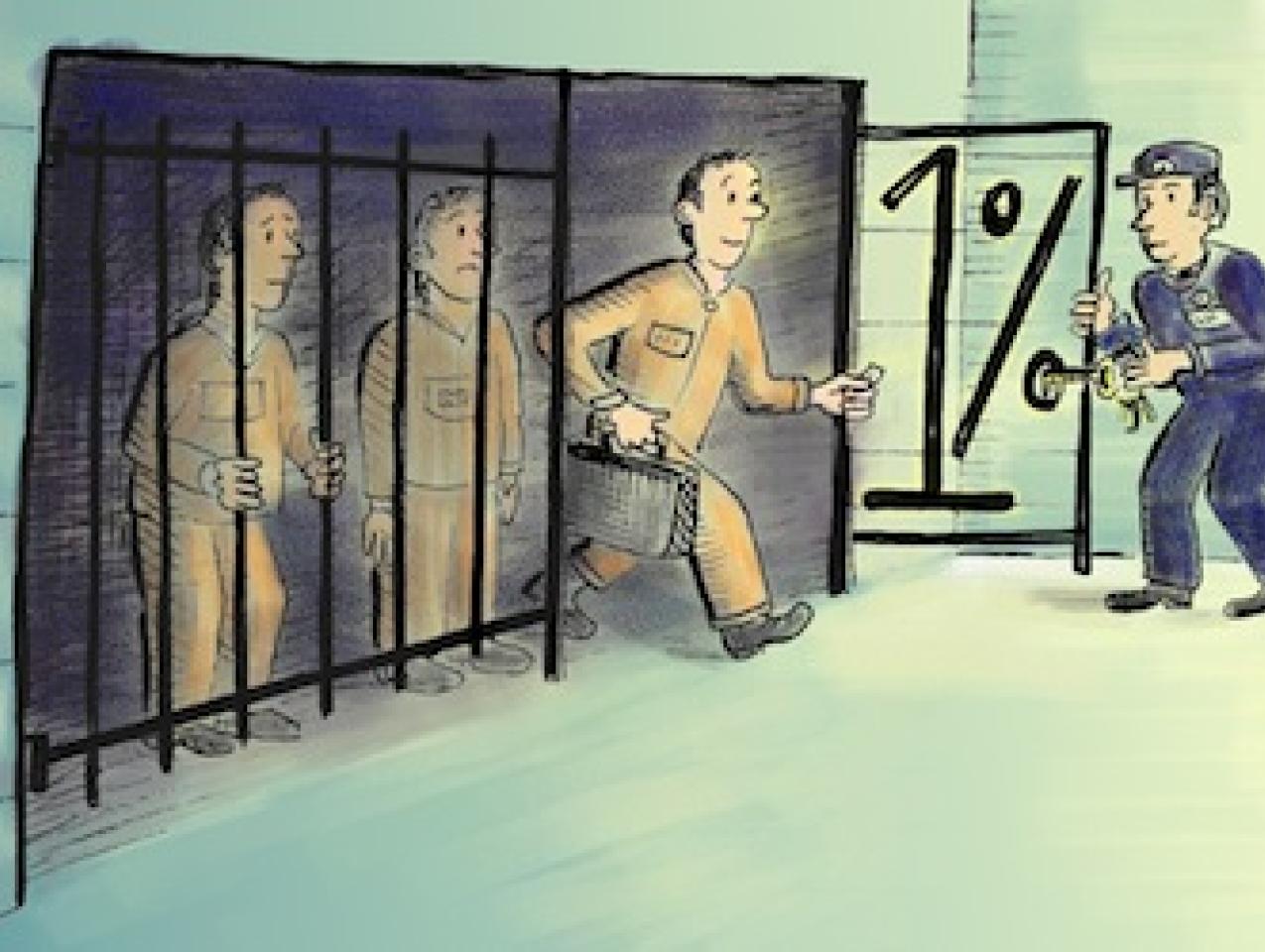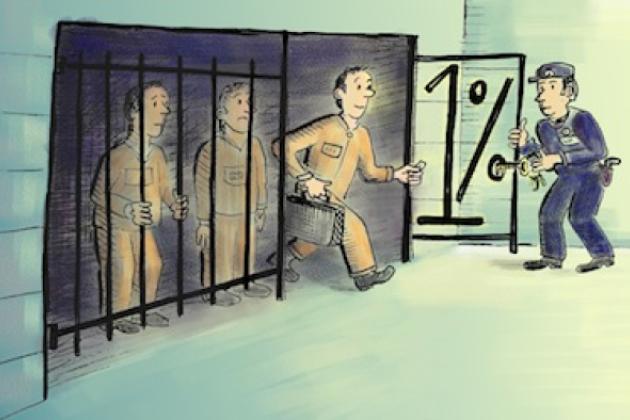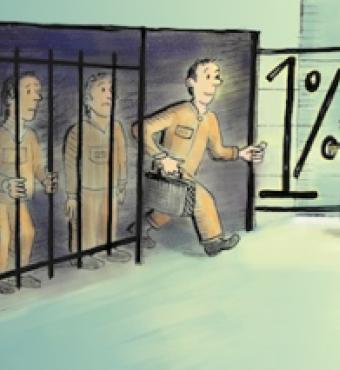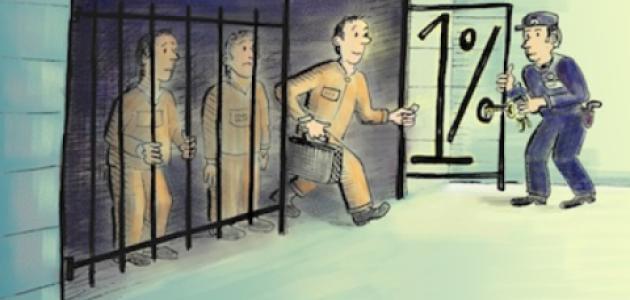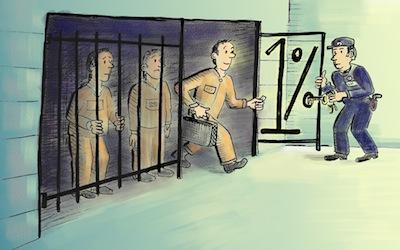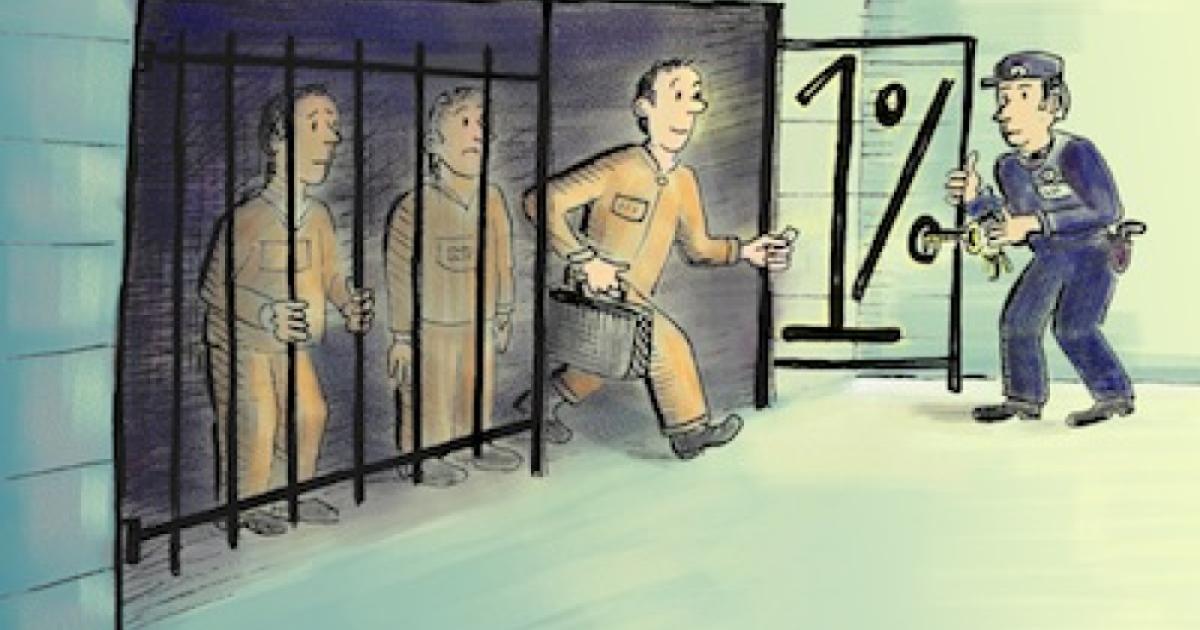- Economics
- Law & Policy
We often hear a lot, especially from those who want to tear them down, about the top 1 percent. We don't hear nearly as much about the bottom 1 percent. Who are they? Where are they? Why are they in the bottom 1 percent? And what should we do about them?
It turns out that about two thirds of the people in the bottom 1 percent are in U.S. prisons. And of these people, a few hundred thousand are there for victimless crimes. Letting them out would help them and save us taxpayer money. That’s a win-win.
Why do I say that about two thirds of the people in the bottom 1 percent are in prison? Consider the numbers. In the United States today, there are about 314 million people. One percent of the U.S. population, therefore, is 3,140,000. In our prisons today are 2.2 million people. We have a higher percent of our people in prison than any other country in the world and the percent of our population in prison has, shockingly, more than doubled since 1980. The people in prison make up over two thirds of one percent of the U.S. population.
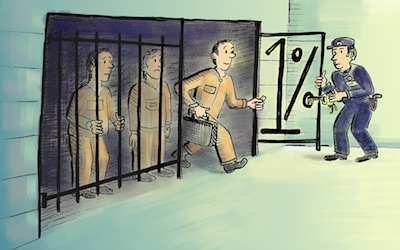
Illustration by Barbara Kelley
It’s true that some of these people have substantial income on the side. Think of the person who, even though he’s in prison, owns stocks or bonds that generate income. But surely, such people could not number more than, say, 5 percent of the prison population. That leaves 2.1 million people without substantial non-prison income, which is still two thirds of the bottom 1 percent.
Some of these prisoners do make income, but their income is tiny, according to a study done in 2002 by the Washington-based Economic Policy Institute. Its author, Heather Boushey, found that Federal Prison Industries (FPI), which employs inmates in federal prisons, pays them between $0.23 and $1.15 per hour, with the average federal prisoner making $0.92 per hour. She noted, however, that from this gross pay, the government deducts funds for restitution, to offset the high cost of incarceration, and for other purposes, leaving the average federal-prison employee with a measly $0.18 per hour.
She reported similar numbers for state-prison inmates. Although their wages were higher, ranging from $0.23 per hour to $7.00 per hour, their “take-home pay” was only about 20 percent of their wages. Even if the average wage were in the middle of the range, at $3.62 per hour, 20 percent of that is only $0.72 an hour. It’s safe to say that people making 72 cents an hour who have no other income are in the bottom 1 percent of the U.S. income distribution.
The Current Unjust System
Why should we care? To see why, let’s divide the prison population into two groups: (1) prisoners who are serving time for having committed victimless crimes, and (2) those who are there because they committed crimes against victims. I maintain that we should care about both but in different ways.
Consider first the group, which I care most about: Those who committed victimless crimes such as drug using, drug cultivating, drug selling, gambling, and prostitution. Of the 2.3 million people in prison in 2008, over 560,000—more than 24 percent—were there for non-violent drug offenses. (I’m assuming that a non-violent drug offense is a victimless crime. It’s hard to see how it could be otherwise. Stealing to support a drug habit can be non-violent, but stealing would not be classified as a drug crime.)
It’s already unjust that they are in prison since they harmed no one. The person who sold drugs, for example, sold them, which means that someone voluntarily bought them. We may question the wisdom of using such drugs as marijuana and cocaine, but the people who use them should be free to make their own decisions. They might make bad decisions, but should people go to prison for making bad decisions that hurt no one but, perhaps, themselves? Both Barack Obama and George W. Bush have admitted using illegal drugs. Would society have been better off if they had spent time in prison?
People who are in prison for victimless crimes are poor mainly because the government has made them poor—by putting them in prison. There’s a simple solution: Let them out of prison. When I was a senior economist with President Reagan’s Council of Economic Advisers, my boss, Council chairman Martin Feldstein, taught me a saying: “When you’re in a hole, quit digging.” How does that metaphor apply here? The “hole” is the fact that people are in prison for victimless crimes. By not putting more people in prison for such crimes, governments would “quit digging.”
I mentioned above the top 1 percent who are getting such negative attention. In recent years, they have been paying over 25 percent of all federal taxes. That’s all federal taxes, not just income taxes. In their textbook, Public Finance, Princeton University economist Harvey S. Rosen and Georgetown University economist Ted Gayer estimate that in 2005, the top 1 percent paid a whopping 27.6 percent of all federal taxes, including Social Security.
One thing that our taxes are spent on is keeping people in prison. According to a 2010 report from the Center for Economic Policy Research, we taxpayers are paying about $25,000 a year per prisoner to keep them there. In California, where high-income people are taxed particularly harshly, we pay about $47,000 per prisoner per year.
Occupy the Prisons
So let me get this straight: High-income people are paying lots of taxes so that the government can put poor people in prison and keep them poor or put non-poor people in prison and make them poor.
We hear the Occupy Wall Street people—and President Obama—advocate taxing the top 1 percent more. I've got a better idea: Let's tax the top 1 percent less and let a few hundred thousand of the bottom one percent out of prison—and out of poverty.
Decades ago, economists introduced the term “Pareto improvement,” named after the famous Italian economist and sociologist Vilfredo Pareto. A Pareto improvement is one that makes some people better off and no one worse off. Such improvements are few and far between because even good policies, such as ending farm subsidies or import restrictions, cause losses to those who benefit from the bad policies. But letting those who commit victimless crimes out of prison is as close to a Pareto improvement as we are likely to find.
The other group of poor people in prison consists of those who are there for committing violent crimes, theft, fraud, and other such things. Most of us think they should be in prison. But even there, there’s a way to make things better: Allow more employers to compete for their services.
In her earlier-mentioned study for the Economic Policy Institute, Heather Boushey criticizes the idea of letting private companies hire prisoners. But the solution, when wages are low, is not to restrict competition for employees but to expand it. With more employers competing for a fixed number of workers, wages would rise. Workers would be better off making money and retaining or acquiring skills. Employers would obviously be better off.
And if the prison took some percentage of the pay, taxpayers would not have to pay as much. That would be win-win-win.








